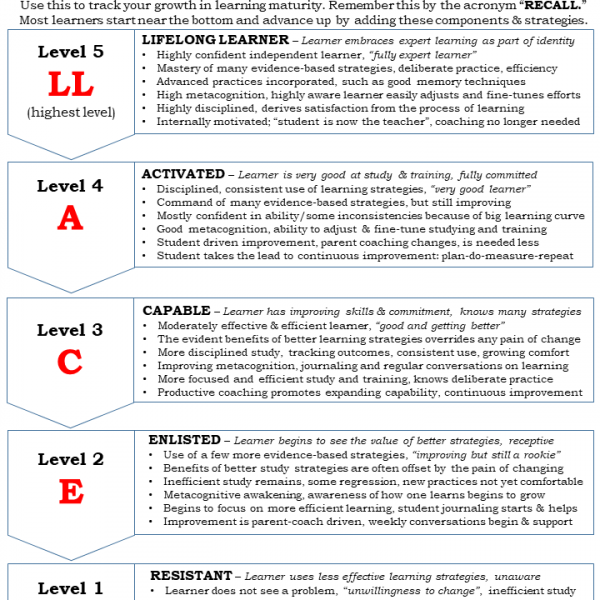
A fun Learning Exercise: “The Amazing Brain”

Reading time to prepare: 15 minutes
An interactive learning experience to discover the amazing learning power we have
How can get your kids to believe they have the hidden potential to learn faster and better? Use this exercise to inform and build confidence in a family workshop you lead
 This exercise has a list of 26 facts you share about the human brain and its great capacity to learn. It includes a leader’s guide with questions you use to encourage deeper thinking about potential.
This exercise has a list of 26 facts you share about the human brain and its great capacity to learn. It includes a leader’s guide with questions you use to encourage deeper thinking about potential.
Save this document because you will want to use it in your learning challenge at the end of the course.
This is one of the many great family learning exercises you get when you sign up for the best course on smarter learning – Improving Your Child’s Learning Power.
Family Workshop – The Amazing Brain
A family exercise to better understand and appreciate our “Great Gift”
Estimated time to run this exercise • 20-30 minutes
Why Should You Do This Exercise?
 This exercise starts a conversation to help create “change readiness” by encouraging your family to think about your vast and untapped learning capabilities. Because most of us take for granted the learning power we have, we tend to underestimate our potential. When we make assumptions about our limits and overlook our powerful learning capabilities, we may not see the value in acquiring better methods and strategies.
This exercise starts a conversation to help create “change readiness” by encouraging your family to think about your vast and untapped learning capabilities. Because most of us take for granted the learning power we have, we tend to underestimate our potential. When we make assumptions about our limits and overlook our powerful learning capabilities, we may not see the value in acquiring better methods and strategies.
“The human brain has 100 billion neurons; each neuron is connected to 10 thousand other neurons. Sitting on your shoulders is the most complicated object in the known universe.”
– Michio Kaku
How These Facts can be Useful
A major objection parents face is the child’s self-limiting belief that he or she can’t learn hard things. This fun exercise encourages conversations to overcome this mistaken thinking.
Whenever a parent hears statements like, “I’m not smart enough to learn math,” or “This subject is too hard!” or “I wish I was smart like so and so,” we should recognize we need supporting facts to counter this incorrect thinking which usually sources from student frustration. (Of course, accompanied by lots of empathy and reassurance!)
This workshop does this. It provides 26 facts as talking points to counter this negativity with a better understanding of the science which proves all kids have enormous potential to learn.
Key Learning Points: Conduct this exercise to support these points:
- Your child is highly capable and already possesses an amazing capacity to learn anything with, of course, practice and hard work.
- Your brain has the amazing ability to reorganize and grow itself throughout your lifetime.
- Expertise is created through training, studying, and hard work – not from high IQ.
From this exercise, you will establish and reinforce the fact we have nearly unlimited mental power, which opens the door for your advocating it is well worthwhile to invest in improving and fine-tuning this amazing capability.
These materials are copyright protected and designed for home use only by individual families. Commercial reuse of these materials in whole or part is not authorized. You are welcome to share this exercise with other families but reprinting and reproduction of them in part or whole for public, group, online, or paid events or purposes requires our written permission.
Leader’s Guide: How to Conduct this Learning Exercise
Approximate time to run this exercise • 15-20 minutes
Follow these steps to prepare and lead your workshop on the Amazing Brain.
A. Your Preparation before the Workshop
- Read the entire directions and the 26 facts so you are familiar with the materials.
- Make copies of pages 5 and 6 so you can distribute them to everyone in attendance. These are your worksheet handouts. Give yourself one because you are a participant too!
- Have pens and pencils available.
- Schedule the time and inform everyone that this is a fun learning exercise about the brain.
B. Leading your Workshop
- Introduce the topic by making the point that we don’t often think about our brains, we take our brains for granted, and there are many misunderstandings that most of us have about our brains.
- Explain how your workshop will work. Each of us will individually complete the assignment without talking or sharing, then we will discuss it.
- Hand out the worksheets and pens. Tell them – Your assignment is silently read all 26 statements, then select the 3 statements you find most interesting, or surprising. “Be prepared to say why you selected each statement.” Ok go!
- Allow enough time, about 5 minutes, for each person to do the assignment. It’s time to start the conversation. “Ok everyone, now that we’ve selected our 3 favorite brain facts, it’s time to discuss them! Before we start, who wants to draw a goofy looking brain on the whiteboard?”
- Ask everyone to share their selected statements. A “round-robin” format works best, where you go around and each person shares one of their 3 facts at a time, and then briefly explains why they selected it. Go around the room three times to cover everyone’s facts. Promote deeper thinking by probing the reasons.
- Build a list of every fact You have the roles of discussion leader, participant, and recorder. (You can nominate an older child to be the recorder) As each person shares, record each fact on a whiteboard or flip chart by listing the number, with a shorthand statement summarizing that fact. This allows you to build a complete family list to discuss in a few minutes. Whenever you think a statement might lend to a fun or goofy drawing, pause the lesson, then ask the nominator to draw it on the board. Make it fun! Make it memorable!
- Lead the discussion. Once you have listed all nominated facts, hold a discussion that promotes deeper thinking use the questions on page 4. It can be fun to acknowledge patterns – did more than one person select the same fact? Why? How similar is our thinking? How do younger kids’ ideas differ from your teens?
Use the discussion points on the next page to process the ideas and encourage deeper thinking about our brains. Have fun thinking about your amazing brains!
How to Lead the Discussion
Questions you use to explore this topic and start discussions: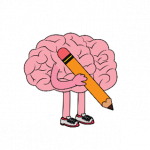
Ask these questions and follow up with others to stimulate thinking:
- As we look at our list on the board, which facts most surprise you about yourself? Why? (You should promote positive thinking about this amazing capability)
- Of these surprising facts we listed, can we agree on only one fact that seems most amazing about our brains? Why? (trying to find one encourages deeper thinking)
- Since our brains are so powerful, why do we tend to take them for granted?
- Most people underestimate the power of their brains. When someone does not realize the great power they have, what negative things can happen?
- Make this statement first – Neuroplasticity means we grow our brains from studying, much like we grow our muscles from exercising. Then ask – “What lessons can we apply from our knowledge of exercising and working out that we can apply to the similar activity of growing our brains?” (Ideas such as: coaching, discipline, increasing the difficulty, burn out from overtraining, need for rest and recovery, diet, sleep, etc.)
- Given what we now know, is it accurate for you to say, “I can’t learn something?” Why? (this will influence your kids’ metacognition) (This is an important point!)
- Now that we recognize we have this supercomputer between our ears, what should this tell us to do when we find our homework, or practice sessions, difficult or too hard?
- When you have difficulty learning something, what should you do to get more oxygen and nourishment to your brain? (draw upon exercising – take a break, snack, move around)
- Our brains have much more capacity than we need to survive – live, eat, and just “get along.” Why have we been given this great gift? (how this gift connects to your spiritual values, better serving others, becoming a lifelong learner, etc.)
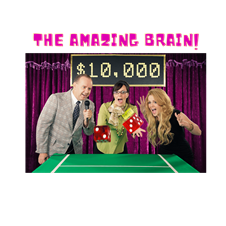
Optional: Now Turn this into a Game Show!
You can add another fun exercise after this discussion, by using these same brain facts to create a game show. Since your kids are now familiar with the statements, you can turn these statements into questions. You can do this either “open” or “closed” book.
Read part of one statement, then and ask your kids to complete it or, when appropriate, answer why. For example, #18 “why doesn’t it tickle when you try to tickle yourself?” or #24 “What do we know about Einstein’s brain? “
The first one to answer correctly gets a point! Everybody who gets to 5 points gets a cookie!

Worksheet: 26 Fun Facts About Our “Great Gift”
– or Why My Brain is Very Cool
Read this list of facts and select the three you find most interesting or surprising.
- There are about 100 billion tiny, tiny little cells in our brains called neurons. There are so many that it would take you over 3,000 years to count them all.
- Your brain’s storage capacity is unlimited – the brain’s storage does not get used up like the data storage of a computer. There is endless brainpower.
- Your brain has enough power and memory to store over 3 million entire TV shows.
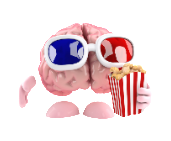
- There are neurons in your brain that tell everything what to do. They send more messages than all the phones in the entire world.
- The neurons send all that crazy info to your brain at more than 150 miles per hour. That is the same speed that a bullet train can reach…seriously fast. But if you need to act quickly motor neurons can send information at more than 200 miles per hour.
- It takes your brain about 1/10,000th of a second to respond to something and generate an action. Wow!
- Neuroplasticity means your brain has the amazing ability to reorganize and grow itself throughout your lifetime – a truly remarkable thing. One study by the University of Montreal, compared the brain activity of individuals who were born blind and those who had normal vision. They found that the part of the brain that’s normally wired to work with our eyes can instead rewire itself to process sound information instead of visual perception.
- The adult brain retains much of this amazing plasticity of the developing brain and can: Has the power to repair damaged regions, a) To grow new neurons, b) To rezone regions that performed one task and have them assume a new one, c) To change the circuitry that weaves neurons into new networks
- More electrical impulses are generated in one day by a single human brain than by all the telephones in the world.
- Have you ever heard the fact that we only use 10% of our brain’s capacity? Well this is simply not true! Every single part of our brain does something. Your brain is constantly working.
- Your brain is even learning when you sleep. When you sleep, your brain consolidates and organizes information that you have learned during the day. That’s why you should read or study a subject just before you go to bed – so you can learn while you sleep!
- The brain acts very similarly to a muscle. You can build up your ‘cognitive reserve,’ or your brain’s innate ability to get a job done, through different types of learning or through new experiences. Learning improves brain capacity.
- You have about 70,000 thoughts each day! Wow! What in the world are we all thinking about?
- Your brain has 100,000 miles worth of blood vessels – enough to circle Earth approximately four times. This brings needed energy to your brain.
- According to computer scientists at Stanford University, a robot with a processor that is virtually as intelligent as the human brain (which does not exist) would require at least 10 megawatts of electricity to operate properly. That enough to power over 1600 homes at once!
- And the brain works fast, too—so fast that it’s speedier than the world’s greatest computer. “The information going to your brain from your arms and legs travels at 150 miles per hour.”
- Your brain has two hemispheres – left for analytical thoughts and right for creative thoughts.
- Have you ever noticed that it doesn’t tickle if you try and tickle yourself? Why? This seems weird as you are doing the same thing somebody else would! Well that amazing brain knows your touch from somebody else – which is why it doesn’t tickle. You can see why the brain is more powerful than any super-powered computer.
 The biggest part of the brain is the cerebrum, which makes up 85% of the brain’s weight. The cerebrum is the thinking part of the brain and it controls your voluntary muscles.
The biggest part of the brain is the cerebrum, which makes up 85% of the brain’s weight. The cerebrum is the thinking part of the brain and it controls your voluntary muscles.- Foods that keep your brain healthy include: fish, blueberries, nuts & seeds, green vegetables such as broccoli and Brussel sprouts. Nope – cookies are not on this list!
- The majority of your brain cells aren’t neurons – for all the neurons in the brain, there are at least as many glial cells that support and protect these neurons. “These microscopic unsung heroes make sure neurons have a constant supply of nutrients and oxygen, insulate neurons from each other, and even help clean up after neural damage. They even help optimize communication between neurons.”
- If you’re left-handed or can write with both hands, a part of the brain called the corpus callosum, which acts like a bridge between both sides of the brain, is 11% larger than people who are right-handed.
- Einstein’s brain was about the same size as a normal brain. What?!
- London cab drivers have to pass a ridiculously hard exam called “the Knowledge” that shows they have successfully remembered every street and landmark in London. In this exam, when they are given a series of problems of “How would you get from Point A to Point B” in central London, they have to accurately describe the precise streets and turns they would take. It takes years of driving and training to acquire this large amount of information. Because of this, they were found to have greatly enlarged hippocampi, the visual memory center of the brain meaning their brains grew because of this training. This is an example of “brain plasticity” in action!
- Grandmaster chess players, the highest rating for chess, test around average in IQ. What makes them so smart is the skills and knowledge they have acquired. This is an example where we might falsely attribute high IQ to another person who has expert skills – where we fail to appreciate that this expertise was really created by training, studying, and hard work!
- The brain devotes more real estate to functions that are used more frequently, and shrinks the space where activities are rarely performed. This means you need to use it or lose it! This why you need to practice and review! And space those practices apart.
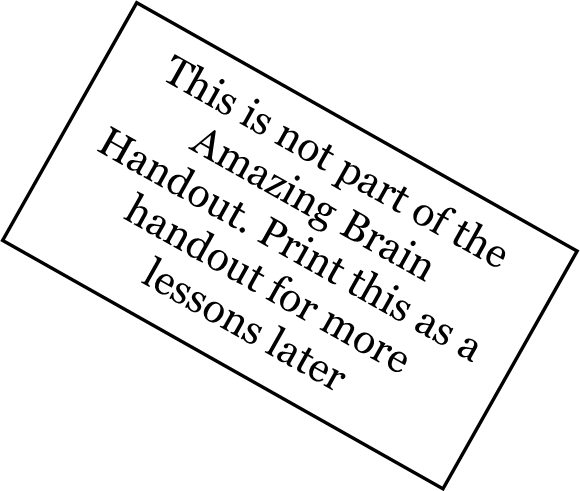 More Mini-Lessons
More Mini-Lessons
 If you want to explore more on this subject, and get your kids thinking more about the super-supercomputer between their ears, sign up at the Center for the Pa 10 course.
If you want to explore more on this subject, and get your kids thinking more about the super-supercomputer between their ears, sign up at the Center for the Pa 10 course.
Each of these can be a Mini-Lesson
- This is a 4-minute animated video on the brain. It’s great for younger kids: https://www.youtube.com/watch?v=Vj4dqVtop7U
- This one-minute video explores the myth that the brain only uses 10% of its capacity: https://www.youtube.com/watch?v=EOY5-e6n5AQ
- For teens, start an independent research learning project with this reading. It describes 8 ways to take care of your brain. Then have your teen report back to you on what she learned and what he will do differently: https://www.mindful.org/eight-ways-to-care-for-your-amazing-brain/
- This is an in-depth article on the brain if you want your child to explore the science more deeply: https://brain.mcmaster.ca/BrainBee/Neuroscience.Science.of.the.Brain.pdf






